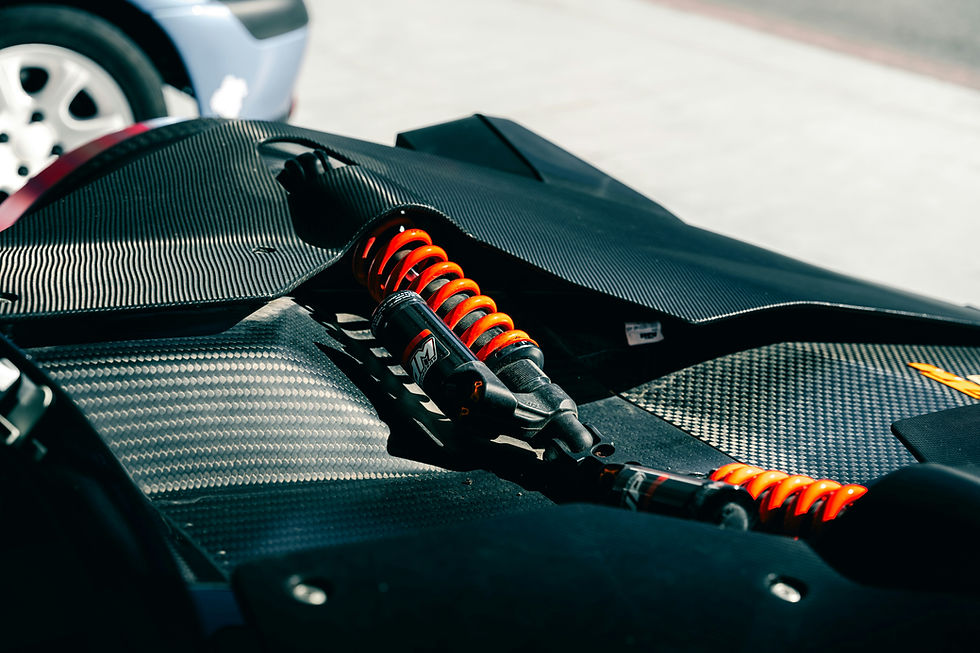Taking Care of your Vehicle in Wet Weather
- autosprintsg
- Dec 20, 2024
- 4 min read
Driving in wet weather can be challenging, even dangerous, especially if your vehicle isn’t properly maintained. The rain and wet roads not only reduce visibility and traction, they can also accelerate the wear and tear on your car. Thus, taking extra precautions and maintaining the condition of your vehicle can help you stay safe and ensure your car performs optimally. Here’s how you can take care of your vehicle during wet weather:

Ensure Proper Tire Traction and Speed Control
Driving too fast on wet roads increases the risk of hydroplaning, which occurs when water builds up under the tires, causing them to lose contact with the road. To avoid this, slow down and keep a distance between yourself and the vehicle in front of you.
Reducing Speed: Slow down on the wet roads to improve traction and reduce stopping distances.
Avoid Sudden Movements: Gently brake, accelerate, and steer to maintain control.
Maintain Distance: Leave extra space between yourself and the vehicle ahead to account for longer stopping distances.
Proper speed control and traction management help you navigate wet roads safely, so take the necessary precautions and drive responsibly!
Keep Your Wipers and Windshield in Top Condition
Having clear visibility through the windshield is especially crucial during heavy rain. Poorly functioning wipers or a dirty windshield can obscure your view further, making driving hazardous. How can we prevent this from happening?
Check your Wiper Blades: Closely inspect your wiper blades for cracks or wear, and replace them if they leave streaks on the windshield or don’t clear the water effectively.
Refill Washer Fluid: Before driving off, ensure that your washer fluid reservoir is full. When refilling, use a quality washer fluid that helps to remove dirt and grime effectively.
Clean the Windshield: Regularly clean your windshield and windows to prevent smudges or water stains. Visibility through the windshield can make all the difference when it comes to thundery conditions.
Apply Water Repellent: Consider using a water-repellent treatment on your windshield to improve the visibility during heavy rain.
Keep safe on the roads by ensuring that your wipers are properly functioning and the windshield is clean. This will reduce the especially when visibility is limited by heavy rain.
Protect Your Vehicle’s Undercarriage
Rainwater often carries dirt, salt, and other debris that can accumulate on your vehicle's undercarriage, leading to rust or corrosion over time.
Rinse After Driving in Rain: Using a hose, clean your car’s undercarriage after a drive through heavy rain or puddles.
Apply an Anti-Rust Coating: Consider applying an anti-rust treatment to the undercarriage to protect the vulnerable areas frequently in contact with rainwater.
Inspect Drainage Holes: Ensure that the drainage holes in the doors and undercarriage are clear to prevent water buildup.
Protecting your undercarriage from moisture and debris prevents long-term damage and costly repairs.
Check Your Lights
Your vehicle’s lights are vital for visibility during wet weather, both for yourself and your fellow commuters. Rain and overcast skies can reduce natural light, making your car’s lighting system even more essential in these conditions.
Test Headlights: Ensure your headlights are working properly. Use low beams in heavy rain to avoid glare.
Inspect Taillights and Brake Lights: Confirm that they are functional. These lights are vital in alerting other drivers to your presence and intentions.
In conditions with poor visibility, functioning lights help you see the road ahead and help other drivers on the road be more aware of your presence. Be sure to give your lights a good check and wipe down before heading out!
Inspect Your Tyres
Tyres are your vehicle's primary point of contact with the road, making them critical for safe driving in wet conditions. Having a proper tyre maintenance routine can significantly reduce the risk of hydroplaning.
Tread Depth: Ensure your tire tread depth is at least 1.6mm, as having shallow treads can increase the risk of losing traction on wet roads. It would be advisable to consider replacing your tyres if the tread is worn out.
Tyre Pressure: Check your tire pressure regularly and keep it at the manufacturer-recommended level. Under inflated tires can affect your vehicle handling, while overinflated tyres reduce grip.
Alignment and Rotation: Misaligned or unevenly worn tyres can impact stability and traction, especially on slippery roads.
Good tyre health ensures better grip on wet surfaces, reducing the chances of skidding or hydroplaning.
Monitor Your Exhaust System
Driving through deep water or flooded areas can cause damage to your car’s exhaust system, potentially leading to costly repairs.
Avoid Flooded Roads: If water is higher than the midpoint of your tires, avoid driving through it.
Inspect for Damage: Check your exhaust system for leaks or damage after driving through heavy rain.
Test Performance: If your car sounds louder than usual or emits excessive smoke, have it inspected by a mechanic.
A functioning exhaust system prevents water from entering the engine and ensures proper vehicle operation.
Wet weather can be unpredictable, but with proper vehicle maintenance and cautious driving habits, you can navigate rainy conditions safely and confidently. Scheduling regular inspections and taking the necessary steps to care for your car not only enhances safety but also prevents costly repairs down the road.
Should you need professional assistance with wet-weather car maintenance, AutoSprint offers comprehensive vehicle checks and services to keep your car in top condition. Drive safely, and don’t let the rain dampen your journey!




Comments